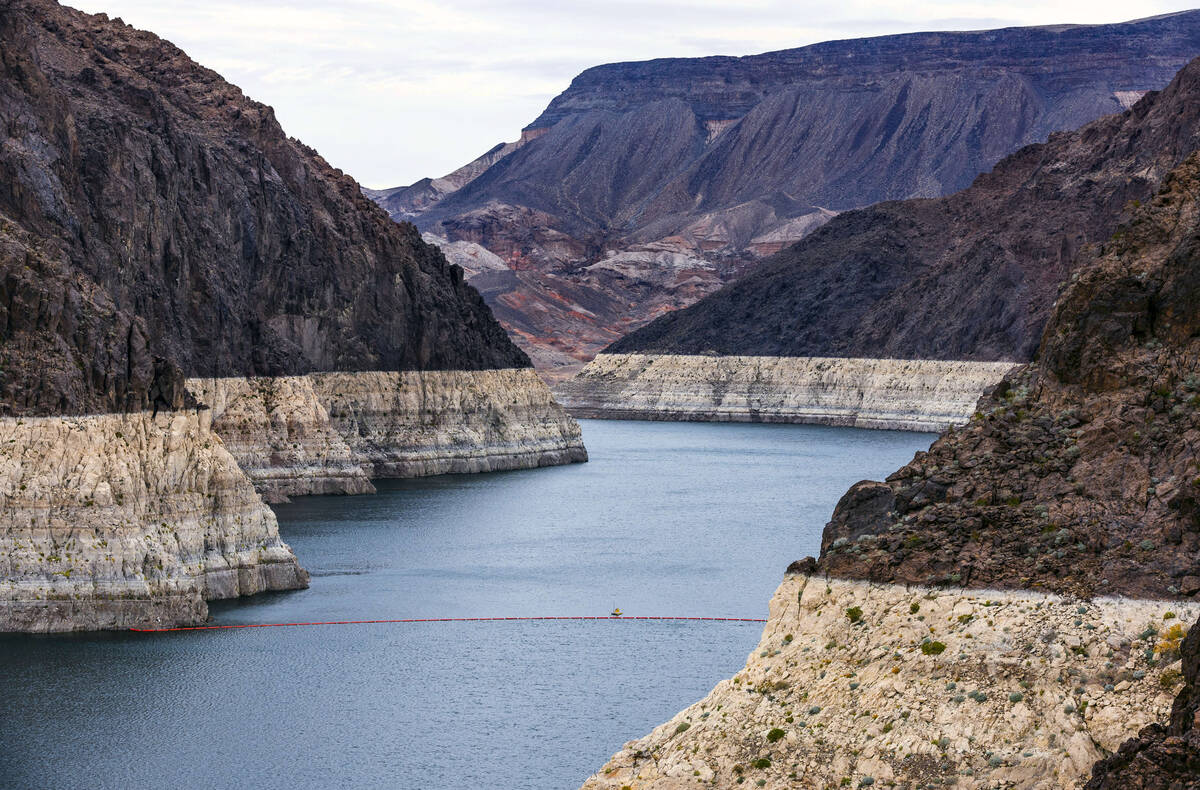Get your feet wet on the West’s water crisis with these 4 books
Over the past few decades, drought has become synonymous with Las Vegas and the greater Southwest.
Residents of Southern Nevada make up a share of the 40 million people dependent on the shrinking Colorado River that states are fighting over once again. A full Lake Mead may feel like a pipe dream with every passing year.
In rural parts of the state, people rely on groundwater found in aquifers. Rights to pump that water are over-distributed, several basins are being over-pumped, and new mining projects could further strain those already-limited resources.
To broaden your understanding of how the Colorado River crisis and groundwater depletion are affecting Nevada, here are a few books to snag for your shelf:
“Cadillac Desert” by Marc Reisner
No reading list is complete without “Cadillac Desert,” a seminal Western water book that has given thousands a baseline understanding of the resource.
Reisner traces the beginnings of the West, which he largely regards as a region not meant to be tamed. Throughout his research, he discovered new insights into Los Angeles’ growth into a major metropolis and how the U.S. Bureau of Reclamation and U.S. Army Corps of Engineers fought over which would remain dominant in Western development.
The limiting factor of Western growth, he finds, is water. He documents the early race to claim rights to water and the effort to make the Colorado River and groundwater sustain an ever-growing region.
“Where the Water Goes” by David Owen
Water fuels life in Las Vegas, but there’s also more water allocated to states across the West on paper than actually exists.
Fielding the complexities of the so-called “Law of the River” that governs how the Colorado River is managed, Owen offers observations about how cities have tried to adapt to shortages. Each chapter is dedicated to a different region of the river and mirrors the author’s discovery of the diverse issues that affect them.
The book focuses on the immense manipulation of the river, prompting readers to ask themselves why the Colorado River doesn’t make its way down to the delta where it would without human intervention.
“Water Follies” by Robert Glennon
Just as vital to discussions of the river is analyzing the disappearance of groundwater. Outside of Las Vegas, wells that make use of the water in the aquifer sustain rural towns without access to the Colorado River.
“Water Follies” is one of the first books to focus on the water beneath us across the country. It uses the Santa Cruz River as a warning — the river that used to flow prominently through Tucson, Arizona, is now almost entirely dried up, all because of over-pumping of surrounding groundwater.
This under-reported issue is one that directly affects millions of people in the Southwest, and this book can help get you acquainted with how water intersects with rural life in Nevada.
“All the Water the Law Allows” by Christian S. Harrison
Las Vegas has long been a leader in conserving water — all water used indoors is recycled and sent back to Lake Mead, and Nevada’s water use comes in every year under what it’s allowed to use from the Colorado River.
Through this novel, Harrison takes readers through a history of how that all came to be. A huge factor, he finds, is the establishment of the Southern Nevada Water Authority, the powerful government agency responsible for implementing conservation measures across Southern Nevada.
For those wondering how Las Vegas stacks up against other Southwestern metro areas, this is a good primer to becoming a local water historian.
Contact Alan at ahalaly@reviewjournal.com. Follow @AlanHalaly on X.


















